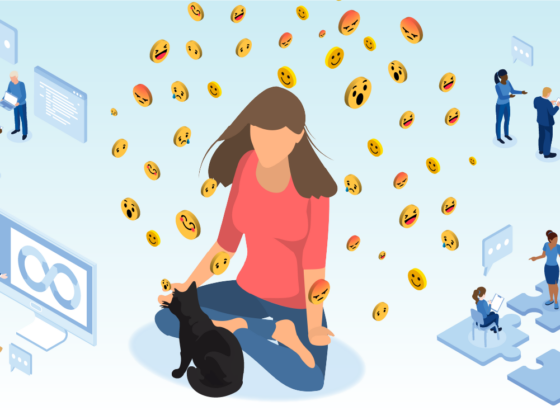“We value broad opinions, backgrounds, and experiences to generate options for our people and clients. We provide an environment that encourages dissenting or unconventional opinions because our colleagues are our greatest asset, and we owe each other candor and honesty.”
By Doug Knesek, Flexion
Introduction
In the previous post, Origin Stories: Behind the Flexion Fundamentals, we discussed why employing agile thinkers was a key hiring strategy for our company. Flexion Fundamentals are principles that guide us and help support increased optionality as we help people build and operate software systems in complex spaces.
In this article, we will look at the following:
- Why Embrace Broad Experiences is our #1 fundamental
- The value of embracing broad experiences
- How we engage unique perspectives
Why “Embrace broad experiences” is our #1?
The answer is simple: senior leadership passionately believes that to be successful as agile developers, we must incorporate option-based thinking into all we do. Placing this fundamental in the number one position helps establish a baseline attitude we can apply to the rest of the fundamentals.
It also gives Flexioneers a constant reference point they can return to when the going gets foggy. Have they sought multifaceted perspectives? If the answer is yes, they can move forward in several directions. But if the answer is no, we have more foundational work to do. While this may be said of other fundamentals as well, with ‘embrace optionality’ in the number one position, it becomes Flexion’s key starting point.
Why is embracing broad experiences such an influential choice? Because it is fundamental to enabling opportunities. Practicing optionality is our key superpower in complex domains. The greater the breadth of thought that goes into our problem-solving, the more dispersed and higher quality our options will be. That is why our recruiters work so hard to find candidates who can add their unique viewpoints to our work process. We need people with various experiences and expertise to actively search for the best solution to every client’s problem.
The value of embracing broad experiences
With a variety of informed thinkers, Flexion can rapidly iterate solutions that deliver value to our clients quickly. But why is this so important to our success? Because the aggregation of their opinions results in lower risk and better solutions for our clients and the people they serve.
The idea of this collective wisdom harkens back to Aristotle and his theory of the judgment of many. James Surowiecki provides a more modern take on this idea in his book The Wisdom of Crowds.
In this work, Surowiecki asks and answers the question: Can a group of eclectic thinkers reach a better decision based on the average of their opinions than an individual expert?
The answer is “yes.” While no person may have a correct answer, the average of all the estimates is accurate under certain conditions. Here are two examples from his book that demonstrate this phenomenon.
- The bull at the fair
- In 1906, Francis Galton, a British scientist, averaged almost 800 entries into a local fair contest to guess the weight of a bull. The resulting number was only one pound off from the bull’s weight. The conclusion drawn from this experience by Galton and others is that a group’s collected and averaged informed guesses are more accurate than one expert’s answer.
- The sunken submarine
- On May 19, 1968, the USS Scorpion, a nuclear submarine, was lost in the North Atlantic. While the Navy knew its last reported location, there were no clues as to how far, how fast, and in what direction the submarine traveled after contact and before a catastrophic event occurred. Naval Command called together people with skills in various related areas, such as mathematics, ocean salvage, and other submarine specialties. Each person estimated the wreck’s location. Five months later, the Navy found the wreckage of the USS Scorpion 220 yards from the average spot.
Why crowd wisdom works
According to Surowiecki, “If you ask a large enough group of independent people to make a prediction or estimate a probability, and then average those estimates, the errors each of them makes in coming up with an answer will cancel themselves out. Each person’s guess . . . has two components: information and error. Subtract the error, and you’re left with the information.”
Engaging unique perspectives
We use this wisdom of crowds phenomenon to create more effective solutions. To fully engage our Flexioneers in the process, we employ collaborative decision-making tools such as Liberating Structures.
These structures establish effective ways for everyone to express their opinion and be heard. Such practices contrast with more traditional (and less effective) problem-solving activities such as brainstorming, managed discussions, or presentations.
To this end, we choose one of 33 Liberating Structures, as laid out in the book The Surprising Power of Liberating Structures by Henri Lipmanowicz and Keith McCandless.
These structures are unique, practical, and no-nonsense methods that empower people to work cooperatively to achieve goals quickly.
In addition to using liberating structures to encourage Flexioneers to share their thinking, we also use other group work techniques, including dot voting, roman polling, and quarantine and combine.
Conclusion
Adhering to “Embrace broad experiences” has many advantages. Our employees’ skills are valued, and they also get to contribute to our work in innovative and engaging ways that satisfy them. We understand that the nature of complex problems changes over time, and we iterate solutions based on our ever-deepening understanding of these problems. These iterations help us ensure outstanding work results. But they are only as good as the option-based thinking our Flexioneers bring to the table and our willingness as an organization to embrace this optionality.
To inquire about partnering with us on public or private sector work, please email sales@flexion.us.
Contact one of our recruiters if you want to work at a company where your unique skills are valued.
Next installment in our Origin Stories series: Flexion Fundamental 2. Separate the what from the how
Next month, we’ll dig into our second fundamental and demonstrate how it relates to our core value of maintaining options and optionality.
For the past six years, Doug Knesek has supported Flexion as an agile coach and delivery leader. Over the past thirty years, he has worn nearly all technical and project management hats in the custom applications development domain. Over the last decade, Doug has used his experience to apply the concepts of agility and self-organization to organizational design and evolution.




